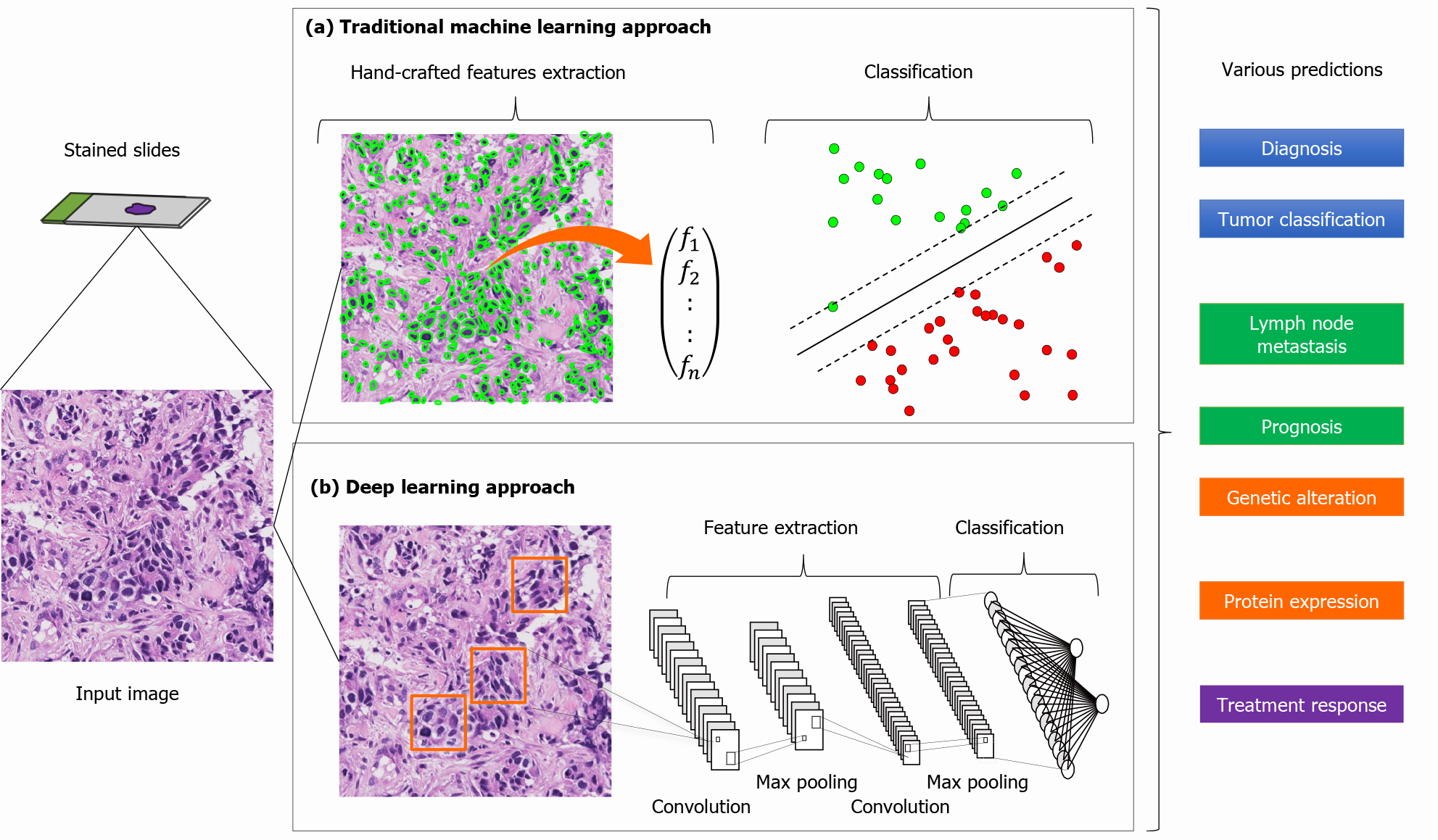Copyright
©The Author(s) 2021.
World J Gastroenterol. Jun 7, 2021; 27(21): 2818-2833
Published online Jun 7, 2021. doi: 10.3748/wjg.v27.i21.2818
Published online Jun 7, 2021. doi: 10.3748/wjg.v27.i21.2818
Figure 1 General workflow of construction of artificial intelligence model in pathology.
Stained slides are converted to digital input images by a slide scanner. Both (a) hand-crafted feature engineering and (b) deep learning approach generate outputs of classification, which are applied to various clinically relevant predictions.
Figure 2 Challenges for implementation in the development process of an artificial intelligence application.
The process of development and implementation of an artificial intelligence (AI) application is composed of multiple steps from needs identification to use in real-life (left). In each step, various challenges keep AI applications from being implemented into clinical practice (right). AI: Artificial intelligence; IT: Information technology.
- Citation: Yoshida H, Kiyuna T. Requirements for implementation of artificial intelligence in the practice of gastrointestinal pathology. World J Gastroenterol 2021; 27(21): 2818-2833
- URL: https://www.wjgnet.com/1007-9327/full/v27/i21/2818.htm
- DOI: https://dx.doi.org/10.3748/wjg.v27.i21.2818










